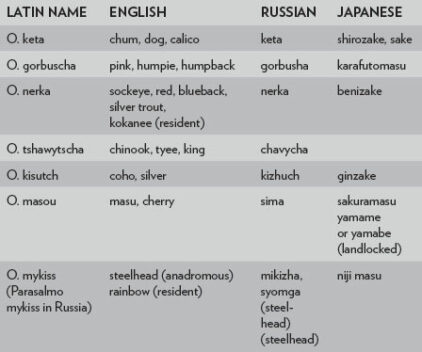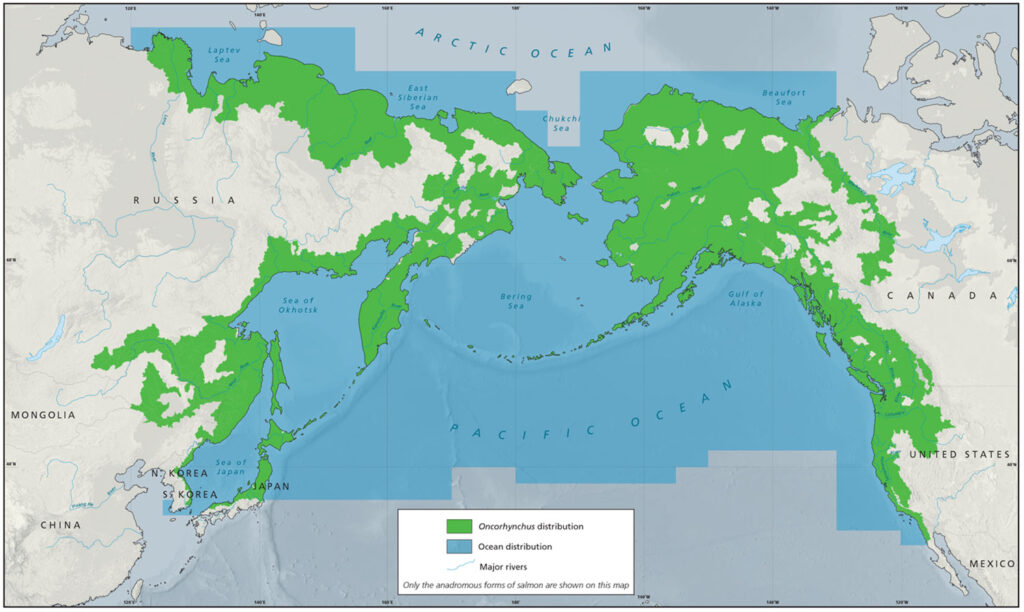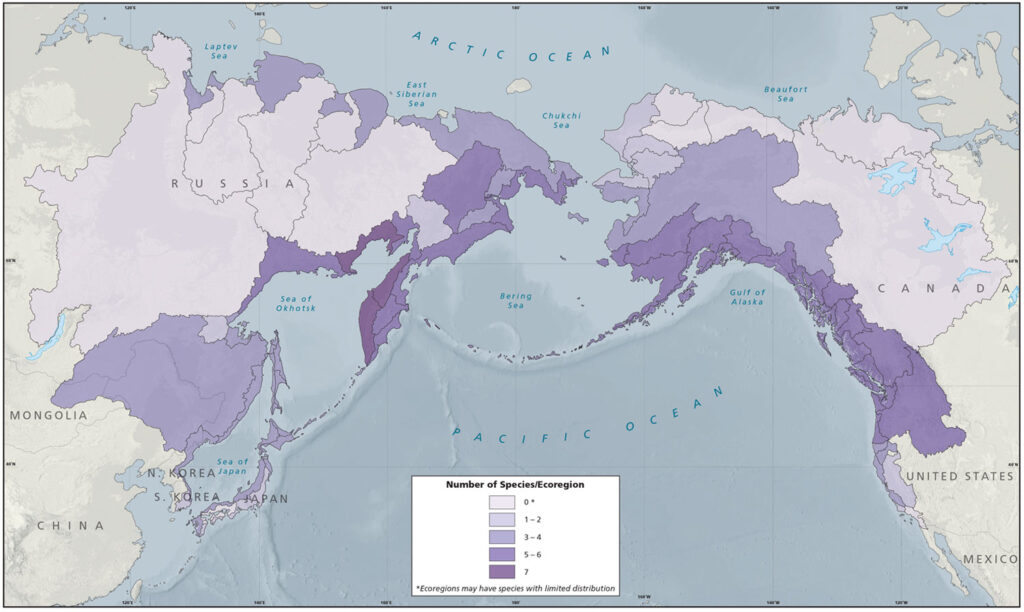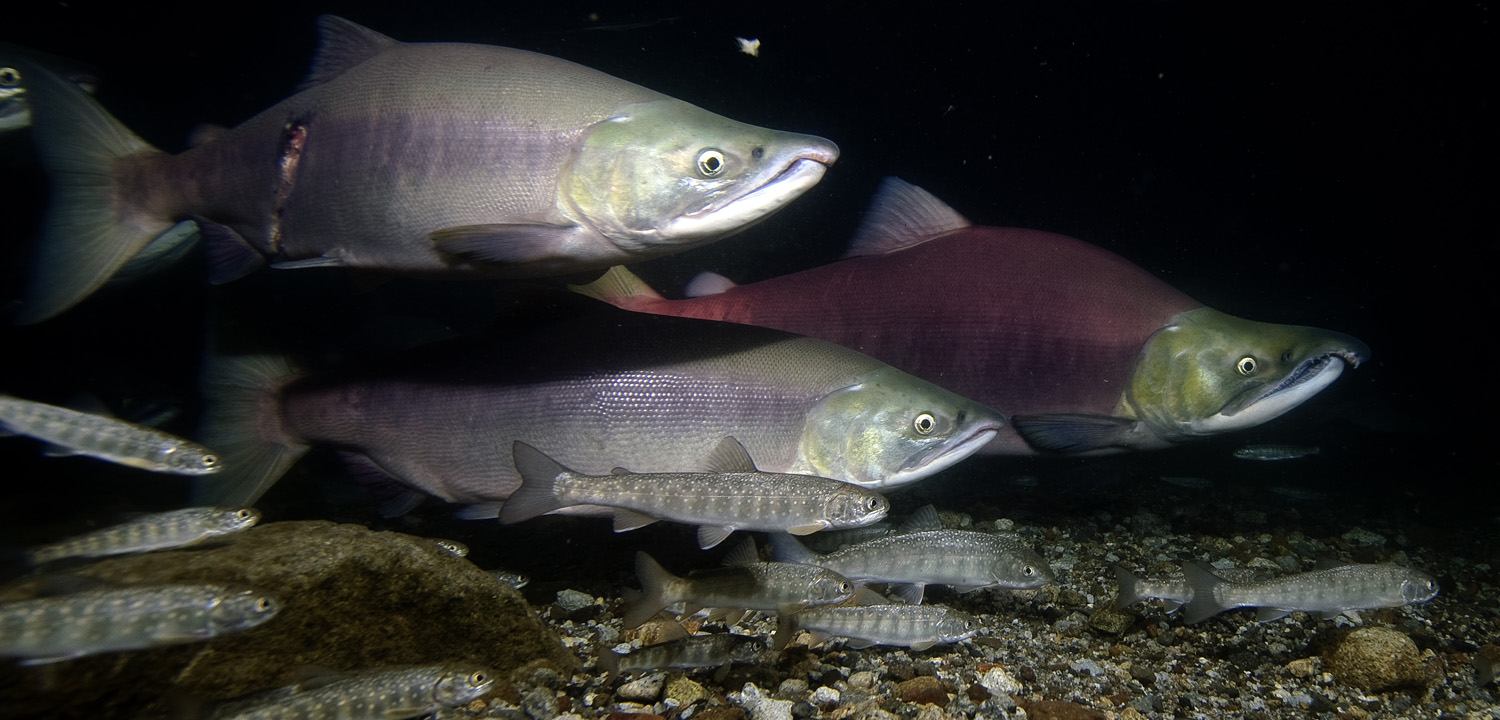Salmon are central to the Pacific Rim. Their annual migrations are a miracle of nature and their presence tells us that our rivers are still healthy. Salmon and freshwater ecosystems are inextricably linked, with runs functioning as enormous pumps that push vast amounts of marine nutrients from the ocean to the headwaters of rivers.
Our Science program works with our partners so that we can best conserve and sustainably use the North Pacific’s wild salmon ecosystems. Learn more about our Science Initiatives and explore our latest studies and publications.
Species Background

Oncorhynchus is a genus of fish in the family Salmonidae (also called Salmonids); it contains the six species of Pacific salmon (Chinook, coho, sockeye, pink, chum, masu) as well as steelhead, and other Pacific trout. Although Pacific salmon date back around 15 million years, current populations descend from ones that survived the last glacial maximum some 17,000 years ago in ice-free areas of Beringia in the north, and along coastal areas south of British Columbia and along the Pacific Coast of Asia (see the Oncorhynchus family tree figure below).
Descendants of these creatures have since radiated from these ice-age refugia, adapting to habitats from Russia’s Kamchatka Peninsula to Washington’s Olympic Peninsula; from Bristol Bay, Alaska, to Tillamook Bay, Oregon; from Sakhalin Island to British Columbia’s Lelu Island; and from Japan’s Sarufutsu River to California’s Smith River. Salmon link these lands across the Pacific, connecting the oceans, nearshores, estuaries, rivers, creeks, rivulets, and, finally, the headwaters where the streams originate. Salmon have used these pathways before they had names, and as far back as the post-Pleistocene era.
Range of Pacific Salmon
The seven species of Oncorhynchus use the entire Pacific Rim coastline and can venture hundreds of kilometers inland in every direction. Salmon use the tributaries, rivers, and estuaries without regard to jurisdiction, from South Korea to Southern California. Note that the map below—a composite of the distribution maps for seven species of Oncorhynchus—shows current and limited distribution as well as historic presence, effectively outlining the footprint of salmon throughout the North Pacific. Pacific salmon are currently expanding along coastal areas of the Arctic Ocean.

The center of range for Oncorhynchus is generally the Gulf of Alaska. From the Russian coasts of Magadan, Kamchatka, and Koryakia, across the Aleutians, and down the North American coastline to Washington, species diversity within the genus is high. Note that coastal areas of the Sea of Okhotsk are the only regions to host all seven species. Conversely, we can also see how the edges of the range contain fewer species.

Wild Salmon Center’s work is focused on assessing and promoting the conservation of strongholds of the seven most commercially important salmonids across the North Pacific. Learn more about our Science Initiatives and explore our latest studies and publications.
